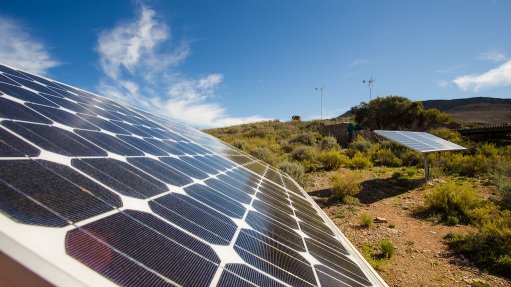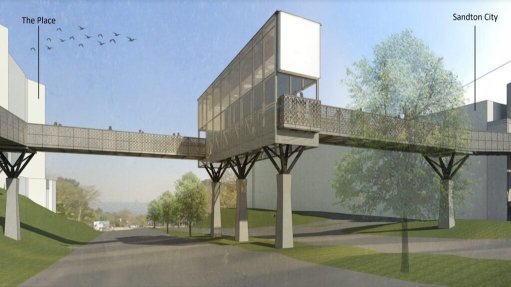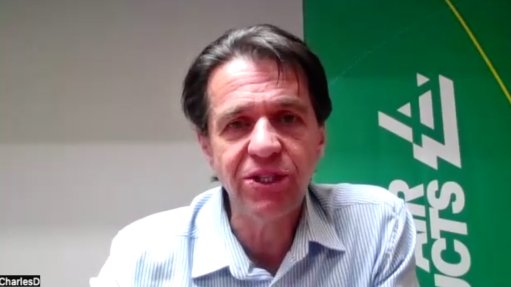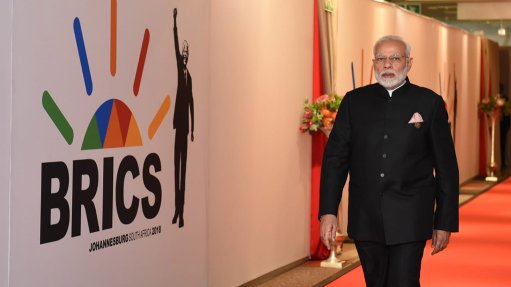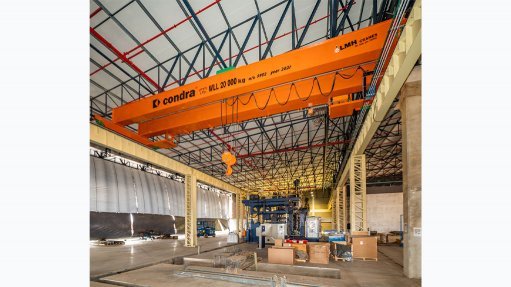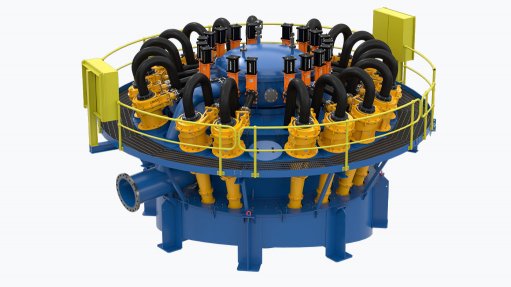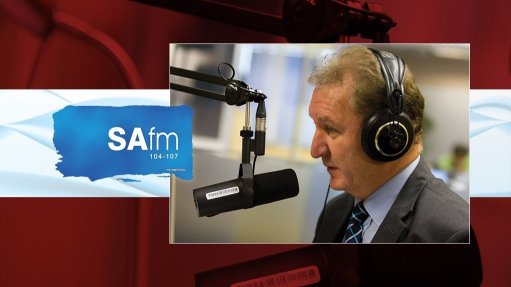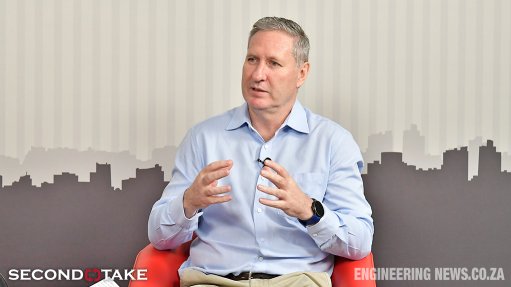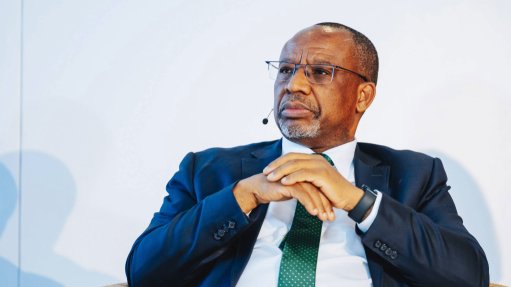Establishment of national water agency draws closer
South Africa’s ambitions of establishing a new State-owned water entity, set to be responsible for financing, developing and managing the country’s water infrastructure, is progressing steadily.
The South African National Water Resources Infrastructure Agency (NWRIA) is expected to be operational by April 2026.
In a briefing to the Portfolio Committee on Water and Sanitation, Water and Sanitation Minister Pemmy Majodina said that the Department of Water and Sanitation (DWS) is establishing the agency to address the current fragmentation in water resource management among the Trans-Caledon Tunnel Authority (TCTA), the DWS and the DWS’s Water Trading Entity (WTE).
It aims to ensure a reliable supply of water from water resources infrastructure, with acceptable risk, to meet sustainable national, regional, social, economic and environmental objectives for all South African citizens.
South Africa requires an ongoing and sustained large-scale water resource infrastructure build programme, in addition to effectively operating and maintaining existing assets.
“There has been a general concern in South Africa that the fiscus is unable to implement water infrastructure projects at the scale needed by the South African economy,” says Portfolio Committee on Water and Sanitation chairperson Leon Basson.
The agency will solicit and source funding to implement, operate and maintain water resources infrastructure efficiently and effectively, with plans to potentially triple the current yearly investment from about R10-billion to R30-billion.
The NWRIA, whose establishment forms part of Operation Vulindlela, will be able to raise these funds on its own balance sheet to increase investment in water infrastructure and mobilise finance for new projects through innovative models to attract private investment.
The TCTA’s current financial model relies on offtake agreements and government guarantees, explains DWS director-general Dr Sean Phillips.
The new agency will expand on the financial model by leveraging the significant assets, and the revenue associated with them, that will be on its balance sheet to raise finance without necessarily obtaining further government guarantees.
Based on its Public Finance Management Act listing and credit rating, assets and revenues, the NWRIA will be able to raise commercial and development finance domestically and internationally, adds DWS water management institutional governance director Eustathia Bofilato.
The agency’s establishment will also strengthen governance and transparency in the water sector by separating the roles of player and referee and the rationalisation and integration of all national water resource infrastructure functions into a single entity, she said in her presentation to the committee.
“Among others, this . . . agency will provide, operate and maintain a national resources infrastructure in a manner that takes account of national development objectives. It will also include the mitigation of climate change and other risks to a reliable water supply,” explains Majodina.
“This will be done by ensuring maintenance, refurbishment, rehabilitation and betterment strategies and programmes that are going to be developed.”
A detailed roadmap presented to attendees highlighted that by April 1, 2026, TCTA will be disestablished, with all its assets and staff transferred to the NWRIA.
There is a technical coordinating mechanism between the DWS and TCTA, with technical, financial, legal, human resources, governance, information technology and communications workstreams to enable a seamless transition.
Majodina will, in the next two to three weeks, be gazetting a notice for applications for the NWRIA board, and while current TCTA board members are encouraged to apply, there will not be an automatic absorption.
The term of the current TCTA board expires at the end of December 2025, and will be extended until the NWRIA is fully established to avoid disruptions.
“Until then, TCTA will continue to exist. We cannot allow a vacuum in this space of the water sector because of the role that TCTA is playing right now. The transfer of functions from both TCTA and the department will need to be managed carefully from both sides,” she says.
The appointment of the board by the Minister is expected to be completed by October, and of the CEO by February 28, 2026.
Outlining the key milestones of the process, Bofilatos says that the DWS appointed a dedicated senior project manager to manage the transition process, and has acquired the services of a financial expert and a legal expert to assist and advise on the transition and establishment of the NWRIA.
The DWS is also in the process of procuring the services of a multidisciplinary professional company to assist with the transition and establishment.
In addition to the appointment of the board, still on the cards is engaging Lesotho on the transfer of the treaty functions; registering and incorporating the agency as a company with the Companies and Intellectual Properties Commission (CIPC); signing of the shareholder compact between the Minister and the board; implementing the necessary amendments to agreements, to the satisfaction of lenders and national treasury; and the transfer of staff, assets and loan agreements from the DWS and TCTA to the agency, which is expected to be completed by April 1, 2026.
In terms of legislation and incorporation, the work of which started on January 13, the memorandum of incorporation review and finalisation was completed on May 31, with the CIPC registration process to be completed by January 31, 2026. The name of the company has been reserved.
A risk register for the transition process has been developed, including risk mitigation measures, and is being monitored by the governance and risk workstream.
Work has also started on the amendments to the existing TCTA loan covenants, and the existing DWS agreements, including the billing agreements and bulk water supply agreements.
Board-approved policies and systems and the corporate plan are expected to be concluded by March 31, 2026.
Comments
Announcements
What's On
Subscribe to improve your user experience...
Option 1 (equivalent of R125 a month):
Receive a weekly copy of Creamer Media's Engineering News & Mining Weekly magazine
(print copy for those in South Africa and e-magazine for those outside of South Africa)
Receive daily email newsletters
Access to full search results
Access archive of magazine back copies
Access to Projects in Progress
Access to ONE Research Report of your choice in PDF format
Option 2 (equivalent of R375 a month):
All benefits from Option 1
PLUS
Access to Creamer Media's Research Channel Africa for ALL Research Reports, in PDF format, on various industrial and mining sectors
including Electricity; Water; Energy Transition; Hydrogen; Roads, Rail and Ports; Coal; Gold; Platinum; Battery Metals; etc.
Already a subscriber?
Forgotten your password?
Receive weekly copy of Creamer Media's Engineering News & Mining Weekly magazine (print copy for those in South Africa and e-magazine for those outside of South Africa)
➕
Recieve daily email newsletters
➕
Access to full search results
➕
Access archive of magazine back copies
➕
Access to Projects in Progress
➕
Access to ONE Research Report of your choice in PDF format
RESEARCH CHANNEL AFRICA
R4500 (equivalent of R375 a month)
SUBSCRIBEAll benefits from Option 1
➕
Access to Creamer Media's Research Channel Africa for ALL Research Reports on various industrial and mining sectors, in PDF format, including on:
Electricity
➕
Water
➕
Energy Transition
➕
Hydrogen
➕
Roads, Rail and Ports
➕
Coal
➕
Gold
➕
Platinum
➕
Battery Metals
➕
etc.
Receive all benefits from Option 1 or Option 2 delivered to numerous people at your company
➕
Multiple User names and Passwords for simultaneous log-ins
➕
Intranet integration access to all in your organisation






